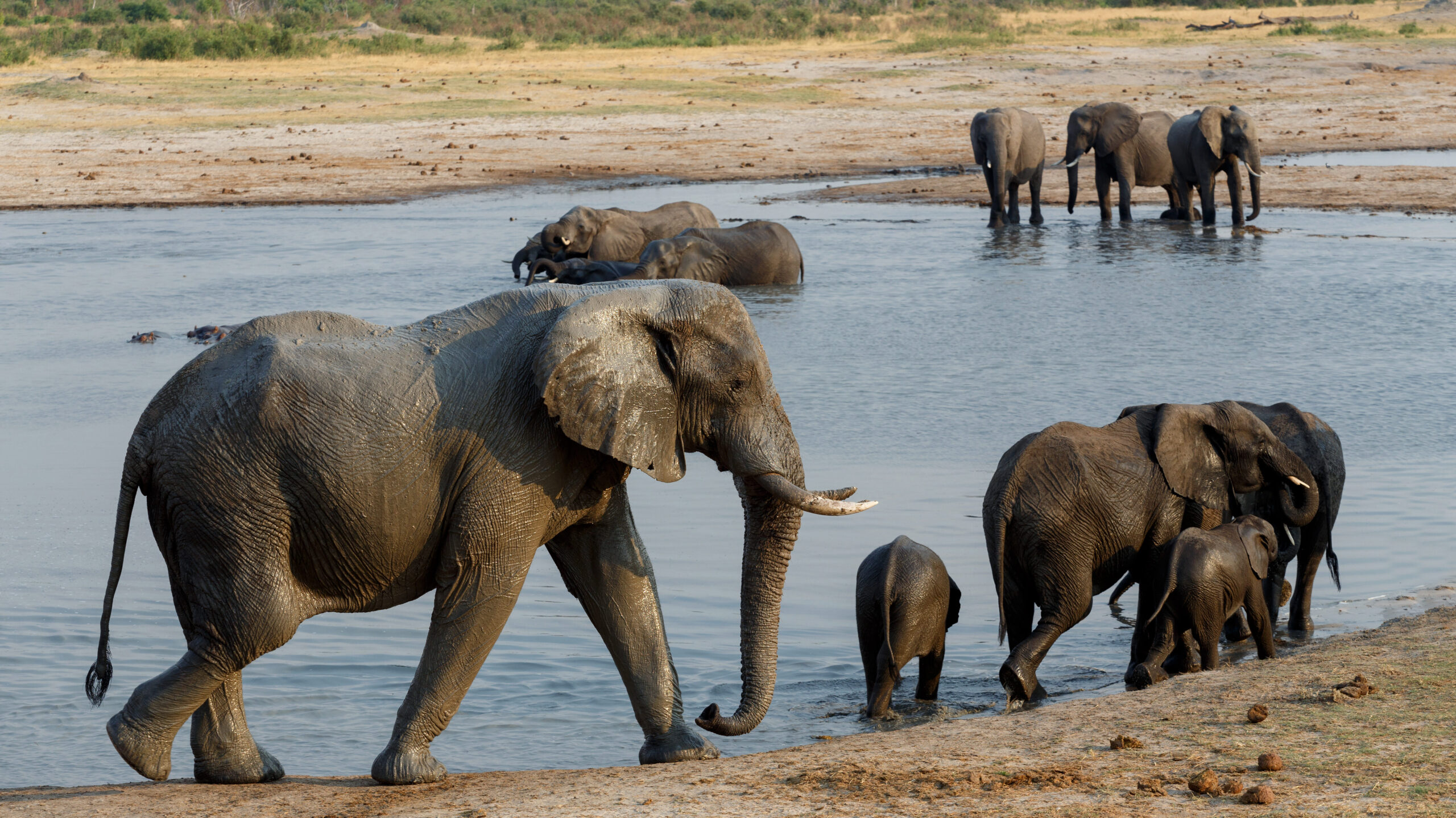The largest contiguous population of elephants in Africa lives in the Kavango-Zambezi Trans Frontier Conservation Area (KAZA TFCA) which encompasses parts of Botswana Zimbabwe, Zambia, Angola and Namibia. Within KAZA, nearly 90% of the elephant population is concentrated in Botswana (58%) and Zimbabwe (29%). In June of 2020, over 300 elephants were found dead in Botswana under mysterious circumstances. Less than two months later—in a span of only 27 days—34 more elephant deaths were reported in neighboring Zimbabwe. The news of these mass mortality events was both notable and concerning given the importance of the KAZA elephant metapopulation to species conservation.

Investigating the Deaths
African Elephants are listed as an endangered species on the International Union for Conservation of Nature’s Red list (IUCN 2021). Their population numbers decreased by over 140,000 between 2007 and 2014, with an estimated 8% continued loss annually (1).
Elephants face ongoing threats from both poaching and habitat loss. During previous dry seasons in the KAZA, there were elephant deaths caused by drought and starvation as well as anthrax and intentional cyanide poisoning. However, none of these causes could be linked to the 2020 deaths in Botswana, with officials there eventually attributing them to an unspecified cyanobacterial toxin (2).
In Zimbabwe, poaching and poisoning were also quickly ruled out as causes for the 34 deaths. Reporting in Nature Communications, a group lead by scientists from the Victoria Falls Wildlife Trust in Zimbabwe performed further post-mortem and histological examination of 15 of the elephants (1). They found inflammation in the internal organs, with hemorrhaging in the hearts, liver, lungs and intestines. Because toxicology results didn’t show signs of any poisons and there were no toxins in the stomach contents, the results pointed to bacterial septicemia, a bacterial blood infection. Further biochemical, 16S rDNA and genome sequencing analysis showed evidence of infection with Bisgaard taxon 45, an unnamed close relative to the cyanobacteria Pasteurella multocida in six of the 15 individuals (1). Heavy growth of Bisgaard taxon 45 was found in the brain, liver and spleen of one elephant, indicating a septicemic condition. These results following examination of the Zimbabwe elephants corroborated the finding of a cyanobacteria toxin in the elephants from Botswana.
What are Cyanobacteria?
Cyanobacteria, a phylum of photosynthetic, gram-negative bacteria, are one of the oldest organisms on earth. They are ubiquitous in marine environments and play an important role in the marine food web as well as global carbon and nitrogen fluxes. Under the right conditions, aquatic cyanobacteria can reproduce excessively, forming algae blooms. These blooms are where their common name—blue-green algae— originates. Some cyanobacteria produce toxins called cyanotoxins, which can be neurotoxins, cytotoxins, endotoxins or hepatotoxins. If a cyanobacteria involved in an algae bloom is one that produces cyanotoxins, these blue-green algae blooms can be dangerous and even deadly to animals that drink from, or swim in, the affected waters.
Although the origin is unknown, it is possible that this type of bloom in a water supply was the source of the Bisgaard taxon 45 that killed the KAZA elephants in Zimbabwe and likely those in Botswana as well. The scientists also point to elephant deaths in 2019 that showed similar bacterial growths in the brain, but where further histopathology was not carried out. In the future collecting brain tissue for further testing could help clarify how much of a risk Cyanobacteria pose to elephant populations. However, because anthrax can’t be excluded in the field, the authors acknowledged that the value of collecting these samples needs to be weighed against the risk of anthrax exposure if the proper protective equipment is not used when opening carcasses that could release anthrax spores (1).
Why Did The Cyanotoxin Only Kill Elephants?
The epidemiology of Bisgaard taxon 45 is not well understood. There were no other notable animal deaths in the KAZA around the areas where the elephants were found, suggesting that they were uniquely impacted by the cyanobacteria even though other animals were undoubtedly drinking from the same water sources. The reason for this susceptibility remains unresolved. It is possible that the elephants were uniquely sensitive to the cyanotoxin present. They may also have been more susceptible because of stress from a combination of heat, drought and population density. Elephants also drink large volumes of water and tend to play in the water and spray it over themselves, increasing their exposure to any water-born toxins by both ingesting it and absorbing it. Further study is needed to better understand the risk that Bisgaard taxon 45 poses to endangered elephant populations.
References
- Foggin, C.M., Rosen, L.E., Henton, M.M., et al. (2023) Pasteurella sp. associated with fatal septicemia in six African elephants Nat. Commun. 14, 6398.
- Benza, B. (2020) Botswana Says Toxins in Water Killed Hundreds of Elephants. Reuters
